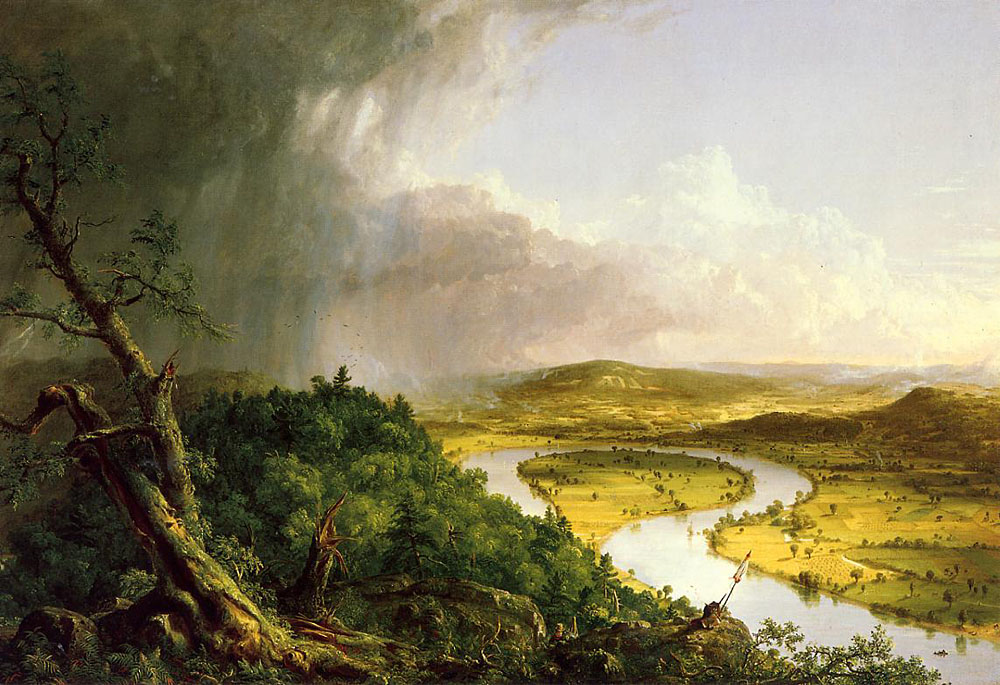|
Wilderness Art: Thomas Cole "The Oxbow" |

| The Oxbox (Oil, 1836) |
In this fascinating and highly symbolic painting, Cole depicts two landscapes: a wilderness on the left and cultivated fields on the right. Our view is from above, just behind one of Cole's favorite forms: a windswept and battered tree.
The tree is illuminated by the sun, but not with the same intensity and sharp contrast as in other paintings by Cole. Yet the tree is a vital compositional element, providing balance, and its sloping outward profile has the effect of drawing the eye toward the oxbow and the river valley below. There's also movement in that same direction with the advance of storm clouds from the mountainous wilderness. Cole was a purist and seldom mixed wilderness and civilization, but here he may be using his art to reason that both are mutually beneficial. Life-giving rain and clean water needed by farms and the people below originate from wild unspoiled lands. Thus, man's future rests on keeping the balance between the two - just as he has balanced the painting by the compositional elements of both wilderness and civilization.
This is the ideal: civilization in the form of small farms and sparsely populated rural areas, but that's as far as Cole is willing to take it. He's clearly not willing to accept that large towns and cities are beneficial to humanity - or to one's spiritual life. When we discuss Thoreau we'll see that the two men clearly agreed on that point. It's only in nature, far away from the clamor and corruption of cities, that we can establish a close and intimate relationship with the divine.
|
Links: Links to Other Works of Wilderness Art - Outdoor Literature Main Page - Outdoor Ed Courses: Home Page
|
